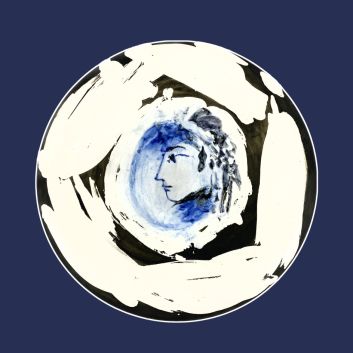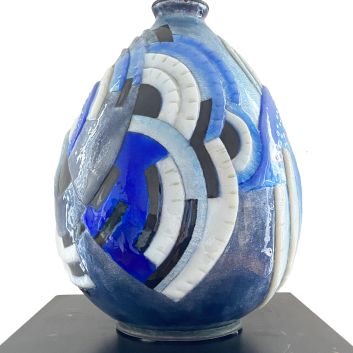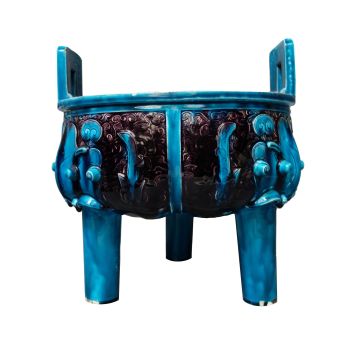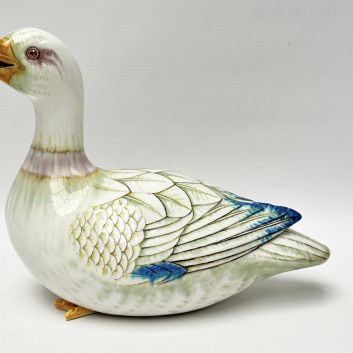Valeur et cote des œuvres, céramiques de Théodore Deck

Si vous détenez une pièce réalisée par l’artiste Théodore Deck ou dans le goût, et que vous souhaitez connaître sa valeur, nos experts et commissaires-priseurs agréés par l’état vous offriront leurs services d'expertise.
Nos spécialistes s’emploieront à réaliser une expertise gratuite de votre céramique, et vous transmettront une estimation précise de sa valeur sur le marché actuel.
Par la suite, si vous désirez vendre votre pièce, nous vous orienterons vers le meilleur dispositif possible pour en obtenir un prix optimal.
Cote et valeur de l’artiste Théodore Deck
Théodore Deck est un céramiste français connu des amateurs de faïence. Si vous en possédez une, sa valeur est peut-être supérieure à ce que vous pensez. Sur le marché de l’art, les prix de ses œuvres peuvent être très élevés au marteau des commissaires-priseurs.
Ses céramiques sont particulièrement prisées et le prix auquel elles se vendent sur le marché de l’art s’échelonne entre 30 € et 66 300€, un écart assez conséquent, mais qui en dit long sur la valeur qui peut être attribuée aux œuvres de Théodore Deck.
En 2013, une paire de vases "éléphants" en faïence a été vendue à hauteur de 66 300 € tandis qu’elle était estimée entre 30 000 et 40 000€.
Ordre de valeur allant d’une faïence simple à la plus prestigieuse
Type d'objet | Estimation |
|---|---|
Luminaire | 350 à 28 300€ |
Vase en céramique | 50 à 66 300€ |
Réponse en - de 24h
Style et technique de l’artiste Théodore Deck
Théodore Deck développe un style bien à lui, une sorte de singularité visuelle qui fait toute la richesse de son œuvre.
Le vert, le bleu turquoise et les touches de violet, qu'il manie avec une grande subtilité, se retrouvent dans toutes ses créations, mais c’est avant tout le bleu turquoise, nuancé et profond, qui deviendra sa véritable signature.
Ce bleu, si caractéristique, portera le nom de « bleu Deck » et deviendra une couleur à part entière, reconnaissable entre toutes. Deck n'est pas seulement un céramiste, mais un véritable innovateur.
Bien qu’il soit considéré comme un précurseur de l’Art Nouveau, il échappe à toute définition stricte de courant artistique.
Il a en effet cette particularité de faire partie de ces artistes dont l’œuvre, dans son ensemble, devient une référence, sans avoir besoin d’être rattachée à une école ou à un mouvement particulier.
Son travail, en dehors des sentiers battus, échappe à la classification et se forge une place à part dans l’histoire de l’art.
Ses pièces, d’une grande finesse, sont le fruit d’un travail minutieux, d’un dialogue entre tradition et modernité, et d’une quête de perfection dans les formes et les couleurs. Avec lui, la céramique se fait sculpture, les objets deviennent des œuvres d’art à part entière.
Théodore Deck, avec sa maîtrise unique de la céramique et son style distinctif, est stylistiquement proche de plusieurs artistes qui, comme lui, ont su allier innovation et tradition dans leurs œuvres.
Il partage une affinité avec des artistes du mouvement Arts et Crafts, tel que William Morris, dont l’attention portée à la beauté des formes artisanales et l'utilisation de motifs inspirés de la nature se rejoignent dans les créations de Deck, notamment par l’intensité de ses couleurs et la richesse de ses textures.
Son travail s'apparente aussi à celui de certains artistes de l'Art Nouveau, bien qu'il ne soit pas directement associé à ce courant.
L'influence de l'Art Nouveau se retrouve dans l’utilisation de motifs fluides et organiques, comme ceux que l’on observe dans les créations d’Émile Gallé, dont les lignes et les formes décoratives rappellent la recherche de Deck pour l’harmonie entre la matière et la nature.
De plus, son goût pour l’expérimentation technique et la recherche de nouveaux effets visuels le rapproche de l'univers des précurseurs de la céramique moderne, tels que artistes comme Jacques et Dani Ruelland, qui ont également exploré de nouvelles approches tout en restant ancrés dans la tradition artisanale.
Enfin, son travail présente également des points communs avec l’œuvre de Gustave Moreau dans le sens où tous deux expriment une sensibilité à la couleur et une approche très personnelle, en dehors des courants dominants, pour aboutir à une œuvre où la technique et la poésie se rencontrent.
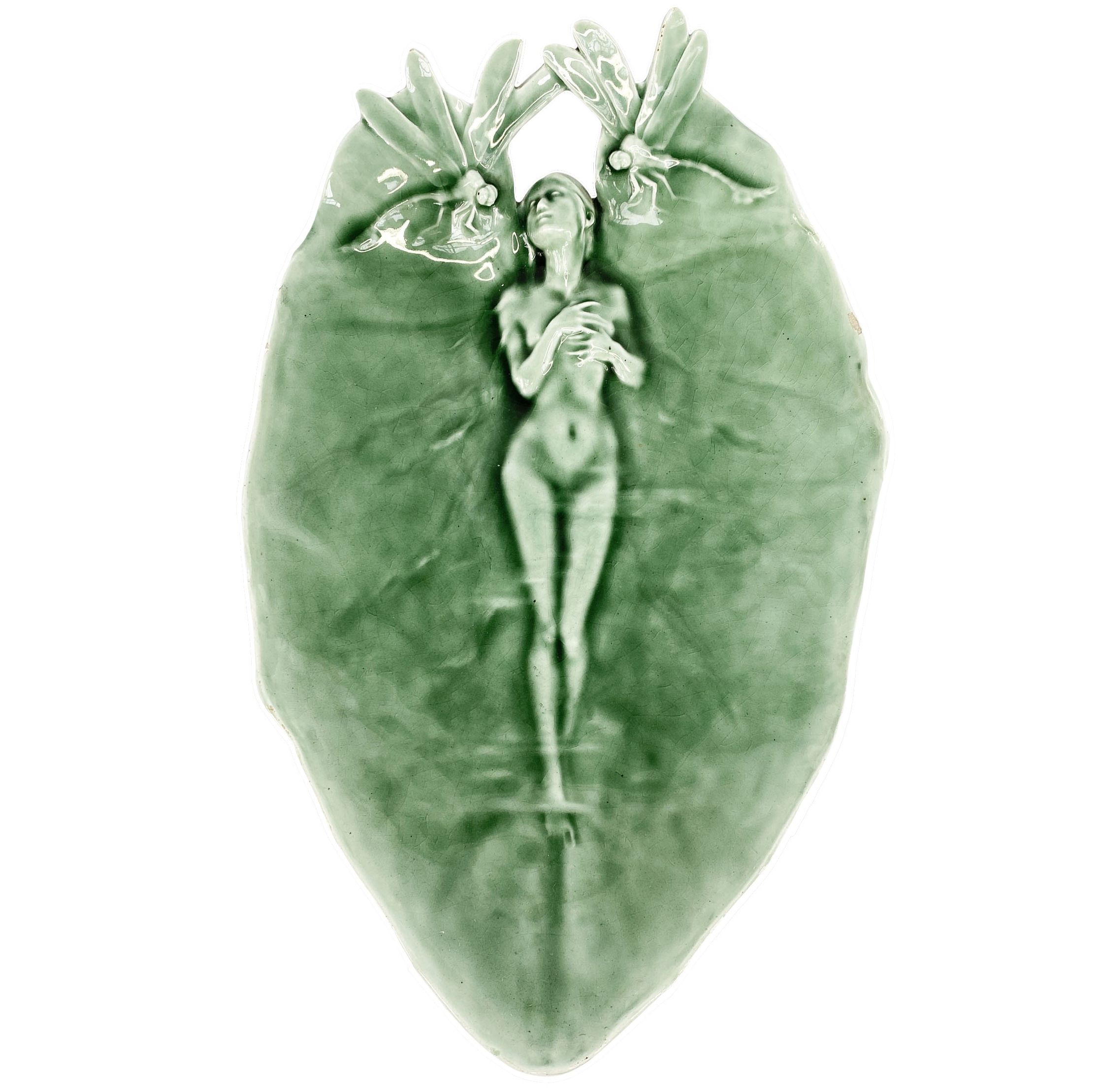
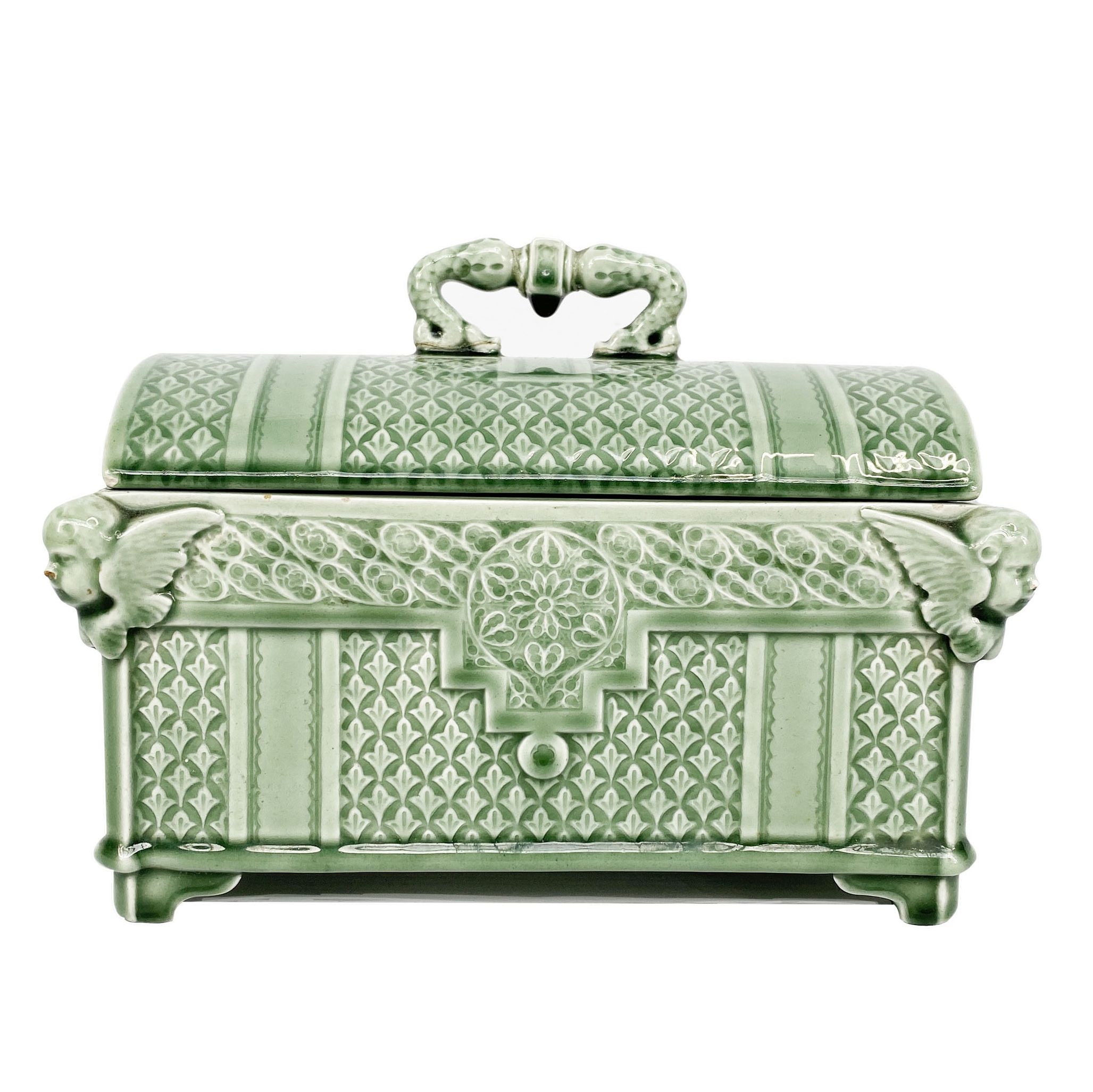
Théodore Deck, de l’Alsace à la fabrique Deck
Théodore Deck (1829-1900), artiste français, est devenu une figure incontournable de la céramique française et mondiale. Il n’appartient à aucun courant spécifique, mais au fil de sa carrière, il développe une technique et un style qui lui sont propres.
Né en Alsace, dans le département du Haut-Rhin, Deck manifeste très tôt un intérêt pour les sciences, mais c’est vers la céramique qu’il décide de se tourner, inspiré par le travail d’un potier en Suisse.
Il entre alors en apprentissage chez un poêlier, où il apprend plusieurs techniques, dont l’incrustation de pâtes de couleurs. Parallèlement, il dessine et fréquente des sculpteurs, ce qui nourrit sa vision artistique.
Son désir d’approfondir ses connaissances le pousse à partir pour l’Allemagne, suivant le parcours du Roi de Cologne et des gisements de kaolin. Ce voyage lui permet de perfectionner ses compétences et de recevoir de prestigieuses commandes.
Il part ensuite pour Paris, où il travaille dans plusieurs ateliers avant la révolution de 1848. Son frère le rejoint à Paris, et ensemble, ils fondent la fabrique Deck, un atelier où il déploie tout son savoir-faire.
Il participe à de nombreuses expositions, dont l’Exposition Universelle de 1862 et l’Exposition des Arts Industriels. Ses œuvres sont également présentées dans toute l’Europe, et sa réputation grandit au-delà des frontières.
Deck écrit également pour partager ses recherches et ses techniques en céramique, et ce, bien avant sa nomination, quatre ans avant sa mort, en tant que directeur de la manufacture de Sèvres.
Il laisse alors la direction de la fabrique à son frère et à sa descendance, assurant ainsi la continuité de son œuvre.
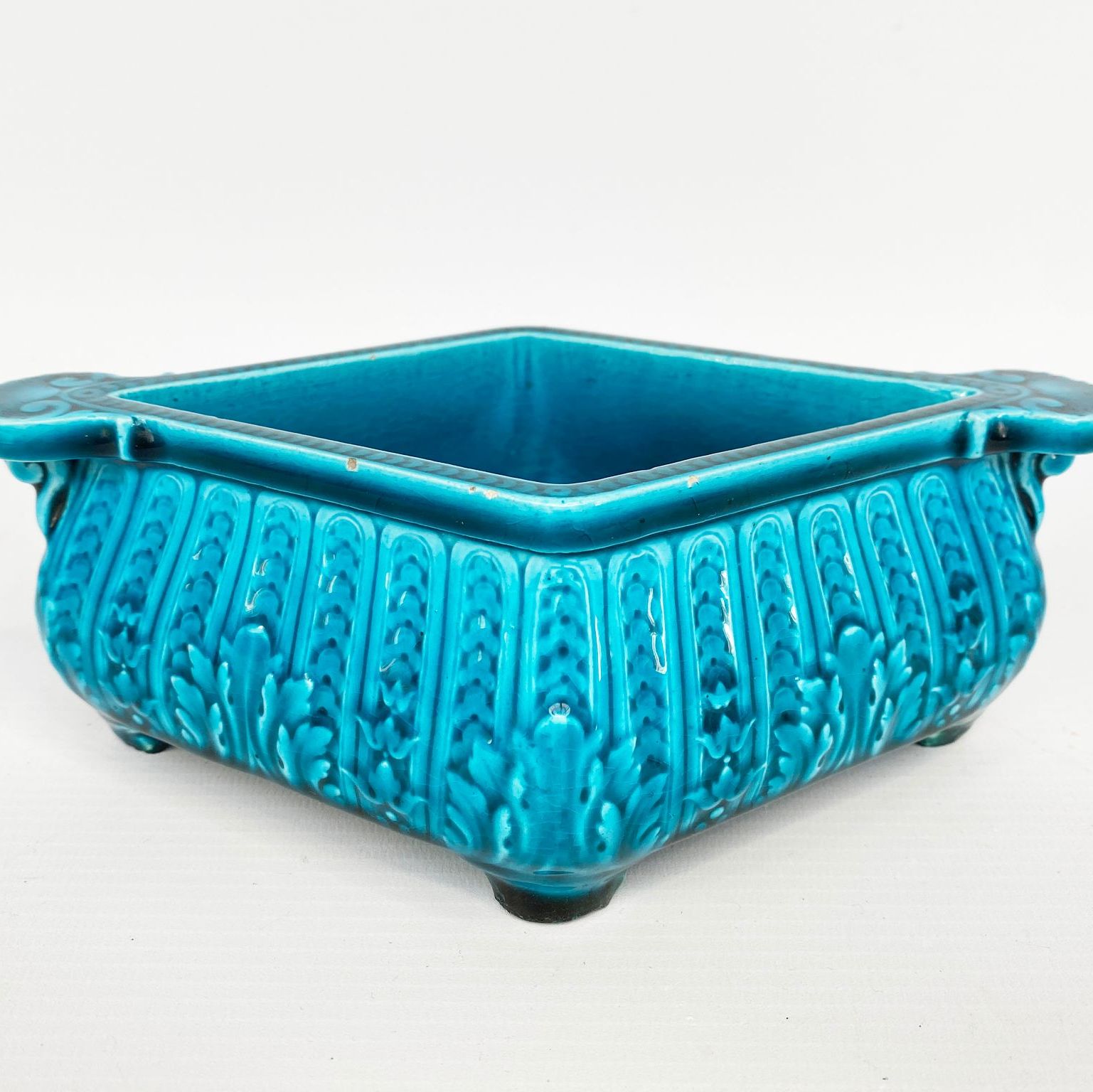
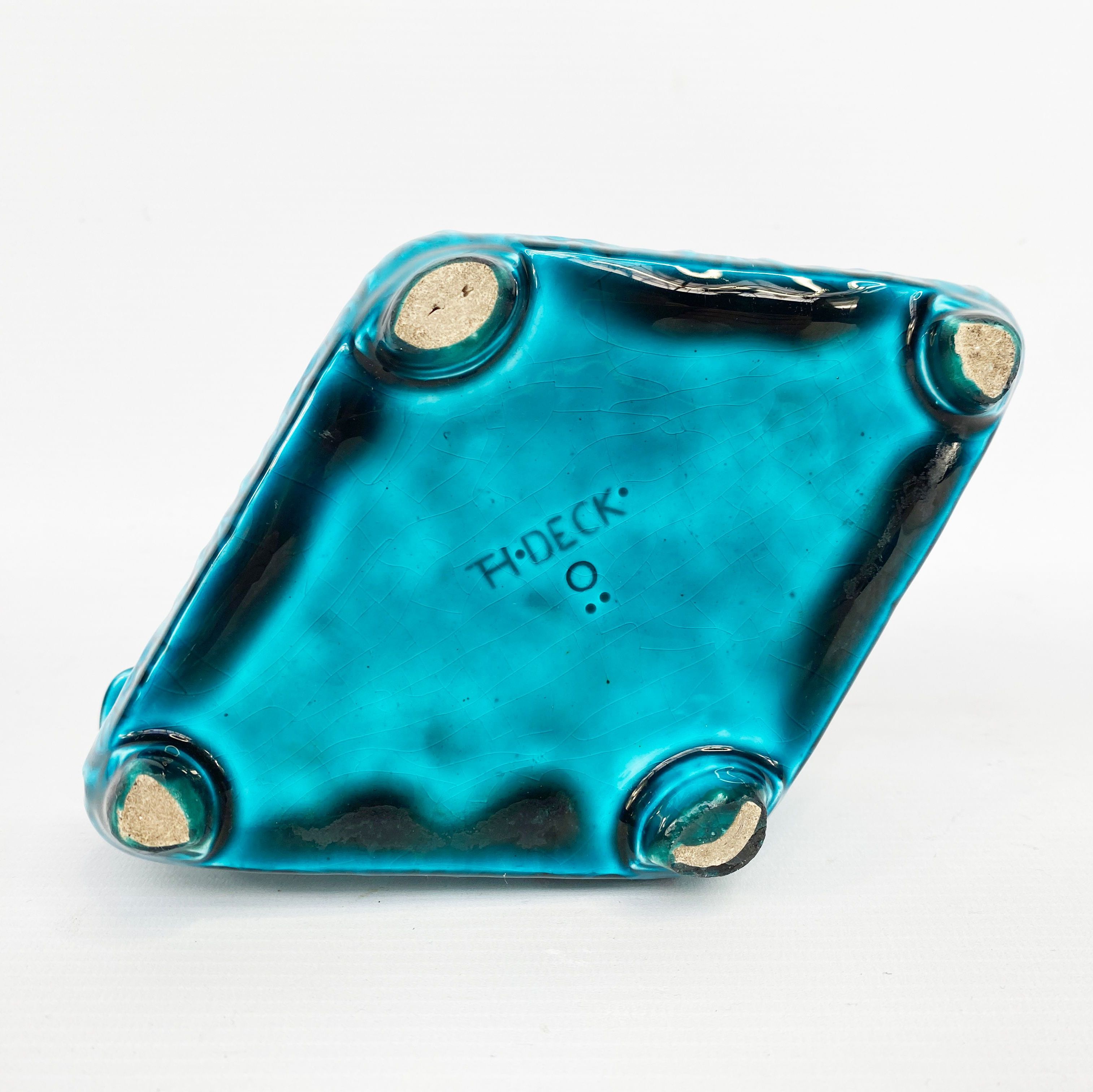
Focus sur le vase aux pivoines de Théodore Deck
Le Vase turquoise aux pivoines de Théodore Deck est une pièce maîtresse qui illustre parfaitement la singularité de son art, où le bleu turquoise, intense et profond, s'impose avec éclat.
Ce bleu, bientôt connu comme le célèbre « bleu Deck », est ici sublimé par la profondeur de l’émail, un bleu unique, presque mystérieux, qui semble capturer et refléter la lumière.
Sur cette toile d'un bleu vibrant, Deck compose un décor de pivoines en relief, sculptées avec une minutie remarquable. Ces fleurs, d’un blanc éclatant, tranchent délicatement avec le fond turquoise, comme si elles flottaient sur une surface miroitante.
Chaque pétale est modelé avec soin, les courbes sont adoucies, presque caressantes, donnant à l’œuvre une dimension sensuelle qui invite à l’observation attentive.
Deck ne se contente pas de suivre les traditions ; il les réinvente. Inspiré par l’art asiatique, dont il adopte certains motifs, il en détourne les formes pour les adapter à sa vision personnelle, sans jamais tomber dans l’imitation.
Ses pivoines, loin d’être de simples ornements, apparaissent comme de véritables sculptures, témoignant de son ambition de dépasser la céramique utilitaire.
La surface de l’émail, d’une douceur presque soyeuse, révèle sa virtuosité technique ; elle capte chaque éclat de lumière, variant du turquoise au bleu nuit selon les angles, apportant à l’œuvre une profondeur fascinante.
Le Vase turquoise aux pivoines est plus qu’un objet : il est une déclaration artistique. Avec lui, Deck affirme que la céramique peut se hisser au rang des beaux-arts, par la finesse de son exécution et la richesse de ses détails.
Il y a, dans cette œuvre, un dialogue constant entre tradition et innovation, une recherche de perfection qui place Deck en dehors de tout courant, tout en le rendant précurseur.
À travers cette pièce, la céramique devient sculpture, et l'objet se transforme en une véritable œuvre d’art, témoin du talent rare de Deck pour rendre chaque création aussi puissante qu’iconique.
Itinéraire d'un céramiste d'exception
La valeur de ses œuvres
Aux yeux des experts et des collectionneurs d’art, Théodore Deck est remarquable par sa singularité artistique. Il a une inspiration grandissante tout au long de sa carrière et innove dans son art jusqu’à la fin.
La majorité de ses œuvres sont conservées dans des collections privées, c’est pourquoi elles sont présentes sur le marché des enchères.
Reconnaître la signature de Théodore Deck
Les céramiques de Théodore Deck sont normalement signées et datées au dos de la céramique. Son œuvre étant néanmoins peu maîtrisée et copiée, il est important de s’adresser à un expert.
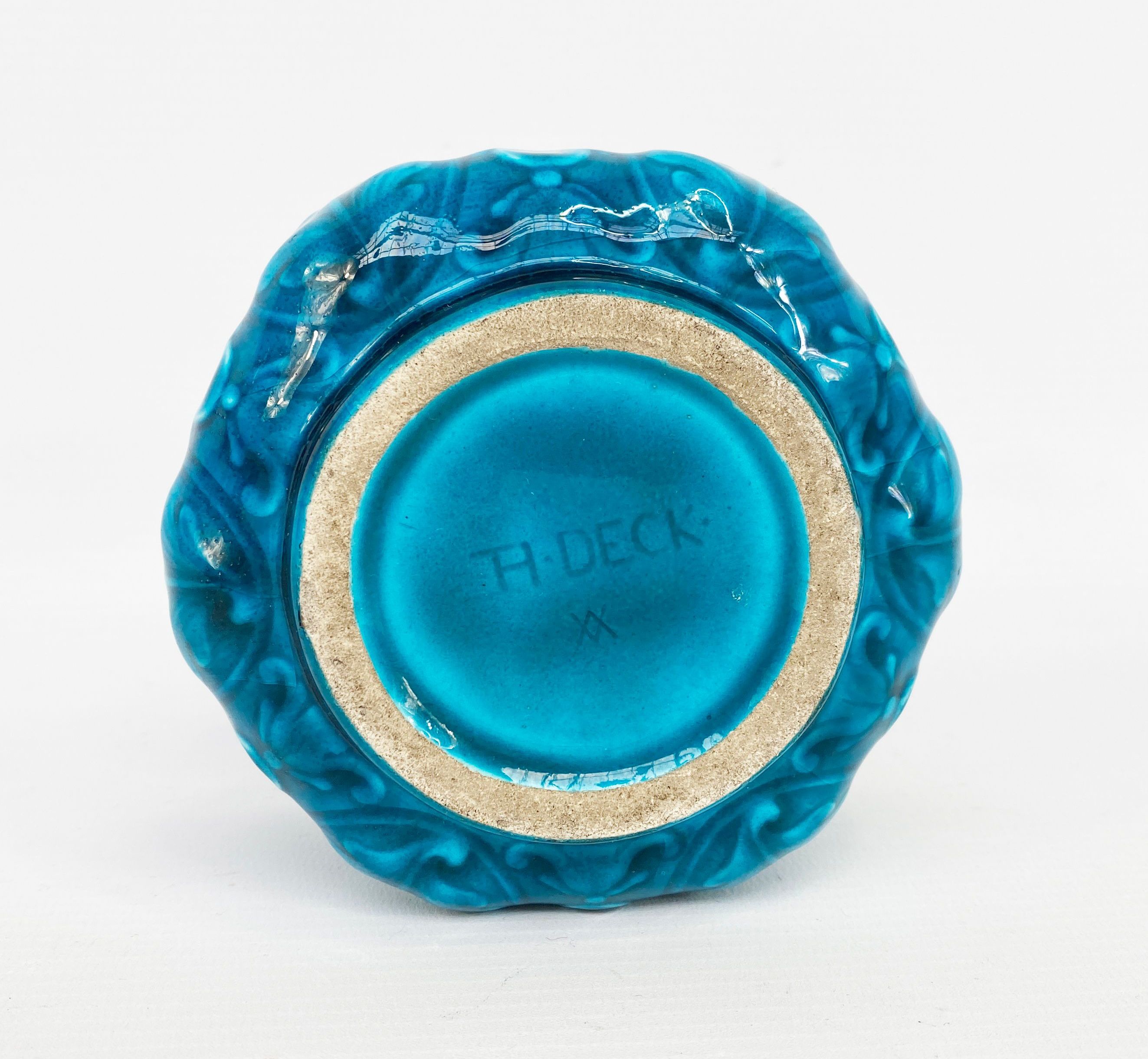
Connaître la valeur d’une œuvre
S’il s’avère que vous possédez une œuvre de Théodore Deck ou d’après l’artiste, n’hésitez pas à demander une évaluation gratuite moyennant notre formulaire sur notre site internet.
Un membre de notre équipe, composée d'experts et de commissaires-priseurs agréés, vous contactera promptement afin de vous communiquer l’estimation de la valeur marchande de votre œuvre, sans oublier de vous transmettre les informations ad hoc sur celle-ci.
Si vous considérez vendre votre œuvre, vous serez également accompagnés par nos spécialistes afin de bénéficier d’alternatives pour la céder au meilleur prix possible, prenant en compte les inclinations du marché.
Réponse en - de 24h
A découvrir dans la même thématique

Cote et valeur des oeuvres, dessins, peintures de Mathurin M...
Mathurin Meheut est un artiste postimpressionniste qui a surtout représenté la Bretagne et produit des oeuvres qui ont du succès aux enchères.
En savoir plus >

Dessins Alix Aymé - Valeur, cote, artiste
Alix Aymé est un peintre du XXème siècle qui a produit des dessins, huiles sur toile et laque du Vietnam. Sa cote est en train d'exploser aux enchères
En savoir plus >
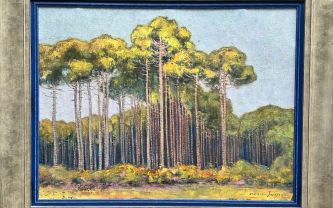
Cote et valeur des tableaux, gouaches, peintures de Jean Rog...
Jean Roger Sourgen est un peintre impressionniste landais du XXème siècle. Il a produit des oeuvres cotées et qui ont de la valeur aux enchères.
En savoir plus >
Site sécurisé, anonymat conservé
Commissaire-priseur et expert agréé par l'État
Estimations gratuites et certifiées
